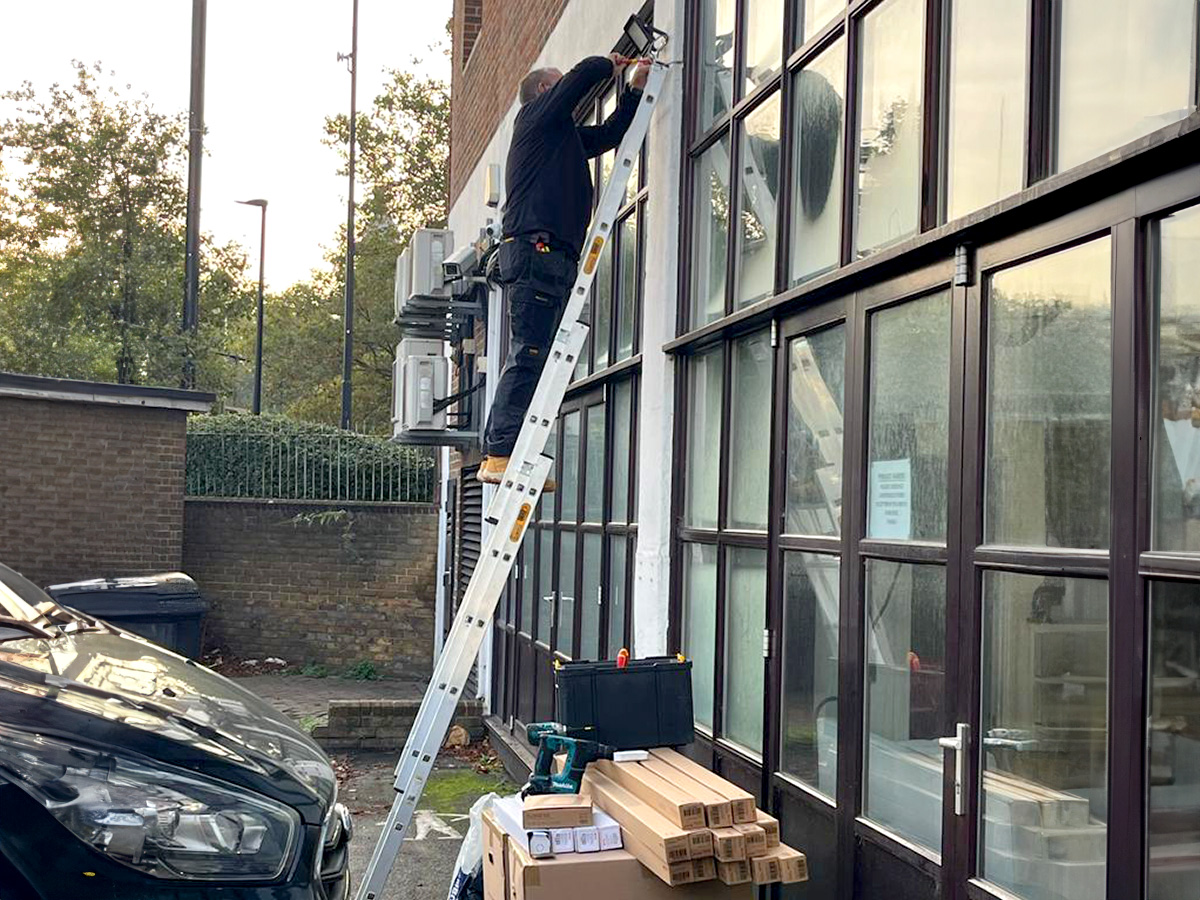Unlocking Energy Efficiency with Green Business Action

New year, new year’s resolution: save more energy. Why? Every time we waste energy, we waste our hard-earned money while simultaneously wasting our carbon budget. All waste is bad, but energy waste is particularly irksome as it can often be easily avoided with a bit more information and some forward planning. Our team of energy consultants have helped hundreds of small and micro businesses understand how they can reduce their energy use and cut costs and we want to share some of our findings to help you cut your energy use both at home and in the office.
What were our top three takeaways from 2023?
- Understand your energy footprint.
- Heat people and things, not air.
- Switching to LEDs is still one of the best ways to cut costs.
Understand your energy footprint
You can’t reduce your bills if you don’t understand them, it’s that simple, and we’ve found that most people don’t understand even how to read their energy bills, let alone reduce them. Why is this? Until recently, most people didn’t think about energy – they just used it. That changed with the energy crisis and more recently, the cost-of-living crisis with more people than ever turning off their heating this winter to manage their rising energy costs. This is a shocking reality and disproportionally affects vulnerable people with health conditions. The main problem is most of us don’t really understand how and when we use energy – or have any idea of why our bills go up. BUT, when armed with this information, businesses and households can cut their bills significantly, sometimes even as high as 80%! without having to turn the heating off.
How can you do this? There, are four main ways we use and lose energy, and each one affects our energy footprint:
- Building design – this is how energy efficient buildings are and depends on the building materials, insulation, windows and so on.
- Energy sources – which sources of energy do you use – electricity, gas, or other fuels.
- Appliances – this is how energy efficient your appliances are including heating, cooling, lighting, computers and so on.
- Behaviour – how do you use energy, how is your heating and cooling set up, do you leave the windows open all year, is equipment left on 24/7?
So, what can you do to understand your energy use? Do a quick energy audit across the four areas listed above. It doesn’t need to take a long time, but you do need to be in the building and walk around writing notes. There is some excellent guidance in this document written by Historic England if you want to do it yourself. Or even better, get a professional energy consultant to do one for you and provide bespoke advice. There are plenty of free schemes to help businesses and households, such as Green Business Action, Hackney Impact, Community Energy London, and many more. If you can’t find one in your local area, contact [email protected] and we’ll help you find one.
Heat people and things, not air
This might seem obvious, but most people heat and cool spaces, rather than people and things. What that means is, most of the heating and cooling energy used in our offices and homes heats the air, which due to the laws of thermal dynamics, escapes. Thus, we spend lots of money making the air feel nice and warm or nice and cool and it seeps out through the walls, floors, windows etc. Why do we do this? It comes down to how we manage heating and cooling systems, and there’s an alternative – heating and cooling people and things – which can save considerably on bills at no or little cost to implement. Below are two examples of where that’s happened…
Intelligent heating and cooling:
A co-working space in East London is using a boiler and wet-radiator heating system which uses 105,852 kWh, is costing £9.5k and generates over 19tonnes CO2 annually. The heating comes on everyday at the same time and turns off in the evening, but the co-working space is essentially empty on Mondays and Fridays as most people are working from home. By simply monitoring when people are in the office and zoning the heating with intelligent controls which regulate room temperature using sensors, timers, and occupancy tracking, they could save at least 40% on these bills, if not more. That would mean £3.8k and 7.6tonnes CO2 savings every year.
Induction vs gas powered cooking:
Restaurant owners are moving away from gas to induction hobs. Gas hobs lose around 40% of their energy heating up the surrounding air, which means kitchens get very hot and air conditioning units, fridges and freezers have to work much harder to keep employees and food cool. Induction hobs in comparison use around 90% less energy as they only heat the pots and pans when they are touching the hob, and the surrounding air temperature is much less affected. When coupled with renewable electricity sources, the carbon emissions are reduced even further. Fuller’s pubs have been rolling this out across a number of their pubs, achieving 948 tonnes CO2 emissions reduction, and we’re helping smaller local restaurants to follow suite.
Working from home:
If you are working from home, rather than heating the whole house in rooms that no-one is using, why not try a small infrared heater that will just heat you in your home office? Let’s say you work in a two-bed flat with a kitchen, bathroom and lounge. You will have at least 5 radiators or equivalent, that use around 1kW per unit. That means for every hour you heat the space you will chew through at least 5kW of energy. In contrast, an energy efficient infrared panel will use around 300watts to keep you warm in the room you are using. That’s an energy saving of 94%. Don’t be tempted to use a fan heater, they need between 2-3kW, which is twice as much energy as your existing radiator. Companies like Herschel Infrared, Suraya, and Castle Heaters all have a selection of free-standing infrared panel heaters.
Switching to LEDs is still one of the best ways to cut costs.
This may seem incredible, but more than half the businesses we’ve conducted energy audits for are still not 100% switched to energy efficient LED lighting. Businesses can save anything from hundreds to hundreds of thousands of pounds annually. The biggest cost saving we identified was £97k annually in a film prop warehouse. With an installation cost of £120k, the new lighting system started saving that company £97k annually after only 14months. Cherry Duck photographic studio, pictured below, spent £3,900 changing all their lighting over to LEDs, with an annual energy saving of 6,400kW, and £1,200 per year. That means after 3.25years, the company will save £1,200 annually on lighting, but because they were given a £2,500 grant from Tower Hamlets to make the changes, the payback period reduced to just over one year.
“I have been so impressed with the support from Green Business Action through the Tower Hamlets Energy Reduction Programme. We were given an energy audit for our photographic studios and the recommendation was to change all our lighting to LED, which is better for the environment and energy saving. The electrician carried out the work and with the help from Tower Hamlets and the team we were able to afford the changes made to the studios. Thank you so much for the support and helping us with our sustainability and keeping us on target for reducing our emissions.” Michelle Vellacott, Cherry Duck Ltd.
If you do one thing this Energy Saving Week to reduce your energy footprint, check whether you have LED lights or not. If you don’t know whether they are LEDs, sent us a picture to [email protected] and we’ll let you know. Switching to LEDs is still consistently one of the quickest ways to reduce bills and carbon emissions.


